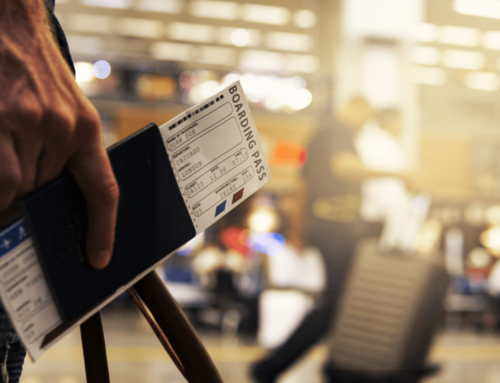Good customer service is the defining factor of any good business – especially important is the first point of contact. As Deaf consumers, we frequent a variety of businesses daily such as retail establishments, grocery stores, restaurants, bars, coffee shops, and many more. If we experience bad customer service, chances are, all of our friends will know about it. Unless there have been improvements, we are unlikely to return.
Nothing tests an employee better than an unfamiliar or different experience such as coming into contact with a deaf or hard of hearing person. In providing good customer service, patience, attentiveness, and clear communication go a long way. What makes good customer service? A customer service blog, HelpScout lists the top 15 customer service skills that make a good employee. All of them can apply to serving deaf or hard of hearing customers.
While bad customer service happens to everyone, regardless if they are hearing or deaf. There are five very common customer service fails that deaf and hard of hearing consumers often experience. Without a doubt, learning to master the following will assure our loyalty and result in repeat business.
FAIL #1: Deer in Headlights
This is a very common reaction often observed at a sales clerk’s station. The employees’ eyes widen and they freeze in their tracks. While, to you, it may have comical value, it also can feel hurtful, rude and is disruptive to the sales process. Deaf people are very familiar with this reaction, and we recognize that it’s unintentional. We sympathize. Generally, many deaf customers are forgiving, and at most, annoyed.
Customer Service Tip: Have your manager practice different scenarios with employees and ask them how they would handle different kinds of customers. By running through the process beforehand, eventually, your employees can be more prepared and relaxed when a deaf or hard of hearing customer actually approaches them.
FAIL #2: The Pen and Paper Fumble
It’s one of those things that seems so simple and makes so much sense – but often doesn’t work out as smoothly as it should. You’d be amazed how many businesses do not have pen and paper nearby. First there’s the universal sign for “pen and paper” – which is very iconic. It looks like the customer is writing on their hand. Usually, there is a long pause when the clerk realizes there’s no pen and paper nearby. Then comes the frantic search (while the deaf customer has probably already located a pen and is writing on a napkin). Meanwhile, the employee’s panic level rises; they become more rattled and nervous, even to the point of getting another employee involved. That’s an extra minute wasted right there.
Customer Service Tip: Find a convenient place to keep pen and paper and keep it there. For the most part, everybody will thank you, including the rushed customer waiting behind the deaf customer.
FAIL #3: The Quarterback Pass
As in the game of football, the Quarterback is the center of the attention. In retail, a manager may be considered the Quarterback. Looking to pass the ball on to another team player is a judgment call, and one that should only be used only when necessary. When you pass the ball (job) onto someone else, the deaf person is left waiting while the panicked salesclerk bolts to find a manager (the Quarterback) to handle the deaf customer.
This adds unnecessary time to the process which often results in annoyed customers. Every deaf person can tell you a story about an employee that they were communicating with who fumbled the ball at the 10 yard line by trying to pass it to the Quarterback. Then the Quarterback often doesn’t know what is going on and has to be filled in.
Customer Service Tip: Encourage your employees to take responsibility in handling their customers and to problem solve on their own. Run through the various options for communicating with deaf or hard of hearing customers and only ask for assistance from the manager when necessary.
FAIL #4: Speaking in the Third Person
Deaf and hard of hearing people are social creatures just like any other customer, and that means they’ll often be with a companion or a friend. Sometimes their friend will not be deaf. Sometimes their friends speak for them, and sometimes they don’t. Every deaf person is different. A common mistake is when the employee talks to the hearing friend or companion about the deaf person in their presence. “What does she want”, they say, looking at the friend to answer for him/her. This is just rude!
Customer Service Tip: Follow our lead. Never refer to the deaf customer in the third person if they are standing in front of you. Speak directly to the deaf person, and they will guide you. As a matter of fact, we’re communication pros, trust us to manage the interaction.
Fail #5: The Foot in the Door
It’s always a nice surprise to run into an employee who knows sign language. It’s definitely a bonus for customer service and an excellent asset for your business. But, just like any other customer interaction, it requires some finesse and just because a person is deaf or hard of hearing, doesn’t mean they know sign language. A new employee taking a sign language class may be excited about using the signs he learned and while it’s ok to be enthusiastic, it might fall on the wrong person if that deaf or hard of hearing person doesn’t sign or doesn’t have time.
Customer Service Tip: Never assume a deaf person can sign. If the signing deaf or hard of hearing customer seems distracted or busy, at this time, it’s probably not the time to ask questions about signs you want to know or converse about the weather. Limit your communication to what you need to complete the transaction and keep it simple. If the customer wants to interact more, he or she will initiate. Encourage your signing coworkers to take responsibility for communicating with the deaf customer and do not interfere with others’ interactions unless asked to.
Final Thoughts …
Being the deaf community is a tight-knit group of people, we share consumer stories with each other and often. We have always done this and likely will never stop.
Deaf consumers are often very experienced at navigating communication barriers. With years of experience, we have learned to “read” people and their non-verbal cues (body language). We are communication experts. Relax and allow us to take the lead. Some of us will talk and speechread, some of us will write, and some of us will use sign language. Unfortunately, some deaf people will be downright rude and bad customers to deal with, just like any other customer. A good employee will be able to deal with any of those scenarios, with humility, grace, and a sense of humor. Just as we do!






